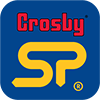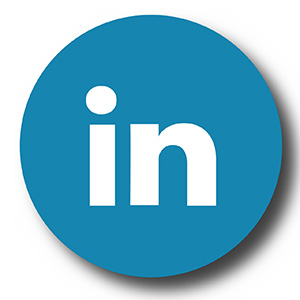
As Straightpoint’s (SP) latest innovation hits the market, Mr. Loadlink relives the Bluelink journey—and looks forward to going live.
I was sipping coffee with U.S.-based colleagues Wayne Wille and Aaron Orsak when Bluelink was first discussed. It must’ve been strong coffee; we spoke for a while. We didn’t know we were taking about it at the time though, nor was it clear if a product at all—new or old—could embody the matters we were chewing over.
Many new products start that way. In my experience, working in industrial markets in particular, it’s rarely a case of envisaging the shape, size, look, and feel of a product, and setting a course to it, but more identifying a gap, challenge, limitation, trend, or nuance and mapping a pathway from it.
How do you know where you’re going if you don’t know where you’ve come from?
Wayne, Aaron, and I weren’t talking about a load cell that introduces Bluetooth technology. We were wondering when existing and prospective customers still utilising outdated mechanical force measurement products might gravitate towards more high-tech solutions, if at all. The same scenario has played out among colleagues and business partners the world over; the individuals, the product, and the marketplace don’t really matter. The synergy is that there’s habitual behaviour to note that could possibly create a business opportunity.
But we were, and remain, an innovative pioneer in force measurement technology; we’re known for smashing through walls and delivering state-of-the-art solutions. One doesn’t have to be that way to be successful, but it’s how we roll. How then could we tap into a demographic that is gatekeeping tradition? Surely that’s for companies more aligned with their place on the curve. Bentley and Skoda both sell cars, but Bentley don’t covet Skoda’s mailing list.
There’s an app for that
Maybe the three of us gazed out the window at one point resigned to that fact. Still the accompanying biscuits stuck in the throat though. This isn’t the automotive business; we’re nowhere near its cycle of evolution. Think about it: 95% of lifts remain unmonitored. Our conversation arrived at a point, therefore, where it became clear to all of us that we needed to create a product with all the SP hallmarks, but that tapped into the curiosity of less progressive minds. Our target audience here wasn’t indomitable, we surmised. There are inherent advantages, after all, of reading data on a smartphone. More than 5% of people have smartphones and most of them love apps.

We’d come a long way over a couple of cups of coffee, yet we were 18 months away from launching the eventual single capacity Bluelink—a 6.5t (14,300 lb.) capacity load cell. As we brainstormed in the days and weeks that followed that landmark conversation, it became even clearer that we needed to stick to our principles but hone the product to a more conventional mindset. I’m sorry if that appears oxymoronic. It’s not, really. We’re wireless innovators and we wanted to roll another wireless innovation off the production line.
The next step was a big one and it’s a leap that some companies forget to take. Sure, Wayne, Aaron, and I know our way around the marketplace but we had to put the concept to distributors and end users to get a sense of its viability. Companies avoid this important phase, typically for two reasons. Firstly, they don’t trust the market’s opinion. In other words, they think they know better. It’s an arrogant stance to take and it’s seen some get caught out. Ok, Henry Ford said, “If I had asked people what they wanted, they would have said faster horses,” but generally a marketplace is a great sounding board. Knowledge is power when deciding on performance and price point.
Secondly, people don’t like to hear bad news. And, true enough, some products have fallen and died at the first hurdle. If someone is particularly proud or sentimentally attached to an idea they might be inclined to take it as far as they can without exposing it to criticism. They only see green lights. That’s tempting but naive. The earlier an idea is scrutinised, the sooner one can measure its viability. Often the negativity isn’t about the concept in its entirety but more elements or components within it, so it should be embraced. For example, “It’s a great idea, but could you extend it to this?”
Amber gambler
Did you know that, at least here in the UK, an amber light means vehicles should stop unless it is unsafe to do so? It’s widely misinterpreted, sometimes even as, “Quick, speed up, it’ll turn red in a second.” This is relevant to product development.

I like to maintain an amber light mentality as we advance through product development. We can still travel with intensity and vigour, yet we don’t move on until it is right to do so. One never wants to get too far too quickly. The mindset adopted during testing should be consistent throughout, as all departments become involved: battery, waterproofing, range, strength, and so on, all has to be recorded, documented, calculated, verified, and tested again.
Eventually, everyone who’s anyone at a company becomes involved, from operations to marketing. Where three of us once sat around a table drinking coffee, now 20 of us are in a boardroom, flanked by whiteboards, buried beneath prototypes, paperwork, and marketing concepts. To help keep a project of such magnitude on track, we use an online tool called Monday.com, which I would recommend. It is essentially a team management solution to connect people to workplace processes. It was founded on the belief that transparency and collaboration create a culture of ownership and empowerment. I buy into that concept.
When a purchaser is out looking for M4 screws, the sales team are in meetings with distributors, the engineers are waiting for feedback from a testing verification body, and marketing are finalising a launch campaign, it’s good to know who’s accountable for what and when delivery is due. Monday.com leaves nothing to interpretation. If Elsie is a day early on this, Abdul is a day late on that, or Gabriella needs more time on the other, everyone knows about it. It’s fun to have an end (launch) date in the system to aim for too.
The reaction to Bluelink’s launch proves the value in our methods. Wayne, Aaron, and I will raise a cup of coffee (or something stronger!) to its success one day soon.
LinkedIn live
Such launches will increasingly feature live video. Business networking platform, LinkedIn, recently confirmed that it is currently piloting live video streaming, as the feature continues to be popular on Instagram and Facebook, for example. It represents natural progression for some LinkedIn users, like me and other SP staff, who already record videos and post them to the site. Eventually, we’ll be able to go live as a trade show opens or to unveil a new innovation—like Bluelink.

It’ll take some strategising to get it right. It helps if an audience knows someone is going to be there. If a launch date on Monday.com says June 6, work backwards and plug in some social media content and other live videos teasing the launch, advising people to tune in at 3pm when they won’t want to miss the grand unveiling. Of course, it’s important not to give the game away and don’t overstate it. What could live up to expectations if a company has been talking about, “The game-changing, earth-shattering, product of a lifetime, that you won’t be able to live without”? Not even Bluelink! Instead, hint at the problems it solves or the applications where it might be applied.
It’s that time of year
I travel to the states soon where the Associated Wire Rope Fabricators (AWRF) Product & Information Exhibition (PIE) takes place on Monday 8 April. The expo is co-located with the association’s general meeting that runs 7-10 April at Hilton Cleveland Downtown. It’s always one of the most enjoyable and productive events in the calendar and there’ll be greater significance to our stand (booth) next to new owners, The Crosby Group, this year. Given timing and logistics etc., the first official SP-Crosby co-exhibit will also be seen that week, at the Bauma show in Munich, Germany (8-14 April), where David Mullard will represent us.
On the subject of Crosby, it was an honour to host their CEO, Bob Davies, here at SP HQ earlier this week. M&S (Marks and Spencer) sandwiches and Yorkshire Tea were consumed as we discussed many an interesting subject about business and the lifting industry.
I want to close by wishing SP’s Lauren Rose, who will be leaving us shortly for pastures new, all the very best for the future. It’s always a pleasure to be able to influence anyone’s personal or professional journey. She’ll always be part of the SP family and I look forward to hearing about her future successes.
Travel safely if you’re off to trade shows. Thank you for reading.
Mr. Loadlink







